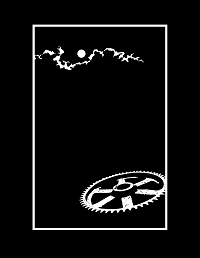There is a 2,000-year-old wonder called the “Antikythera mechanism.” I plan to talk about it, but I’ll start in 1993 when I got some nifty drawing software and took it into my head to try to compose an image resembling a coin with a two-faced Janus head on one side. Since the program allowed me to position visual elements precisely I decided to put small circles like a string of beads around the edge of the coin. This proved surprisingly challenging. The diameter of the coin was 7 inches, so its circumference was roughly 22 inches (2 x pi x (7/2)), but the string of circles needed to be just slightly inside the circumference of the circle. And the circumference of each little circle was a line that had thickness, and I wanted those little circles to overlap at their points of contact.
Something I realized pretty quickly was that I would make myself crazy if I tried to draw every single little circle and hope that they would all meet up nicely when the two ends came together over a 22 inch circular span. So instead I divided the 7 inch circle into eight 45-degree slices, fitted the small circles along the curved edge of one of the slices, then made seven copies and arranged them around the circumference of the coin. The result was not perfect uniformity, but it did not offend the eye. And since I was only drawing, and not trying to manipulate solids, or needing to have my work mesh with something else, what I came up with was sufficient.

